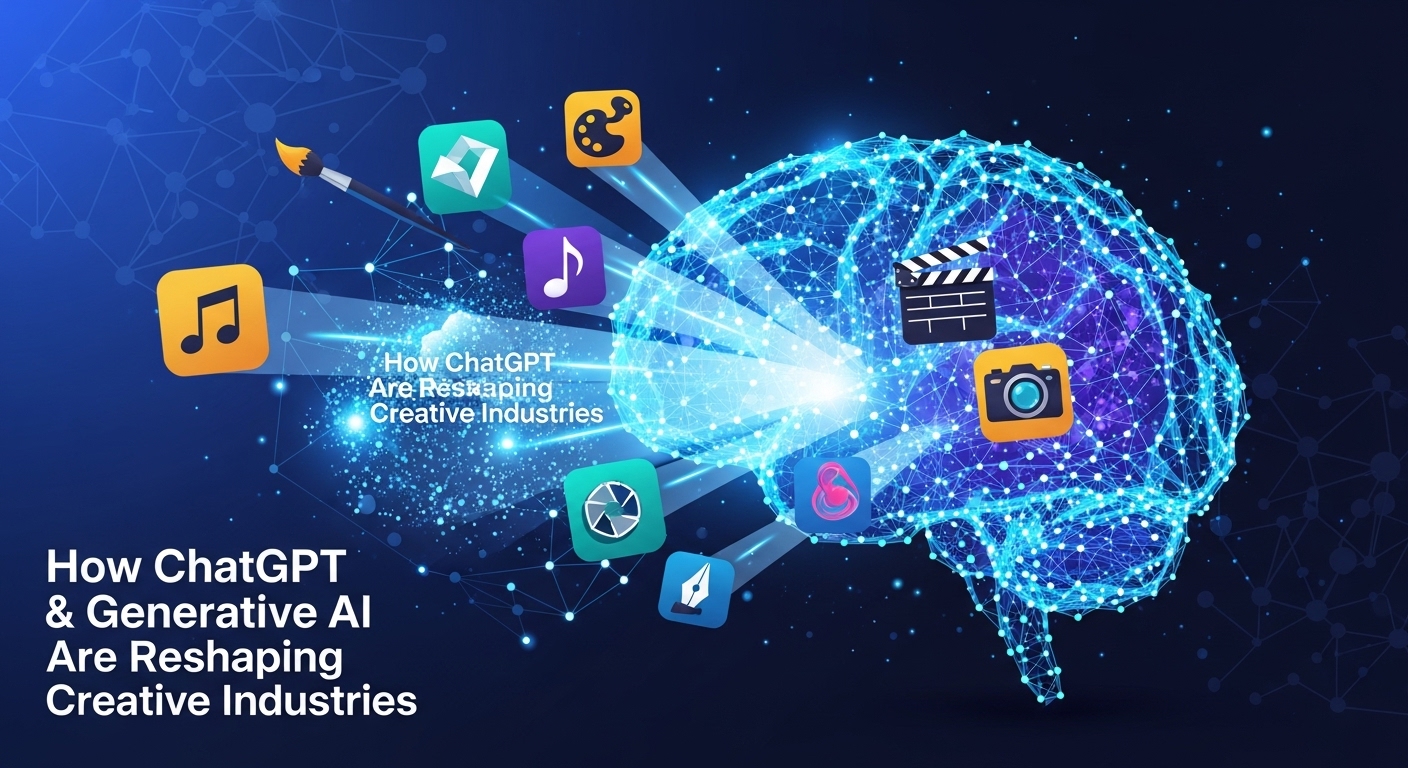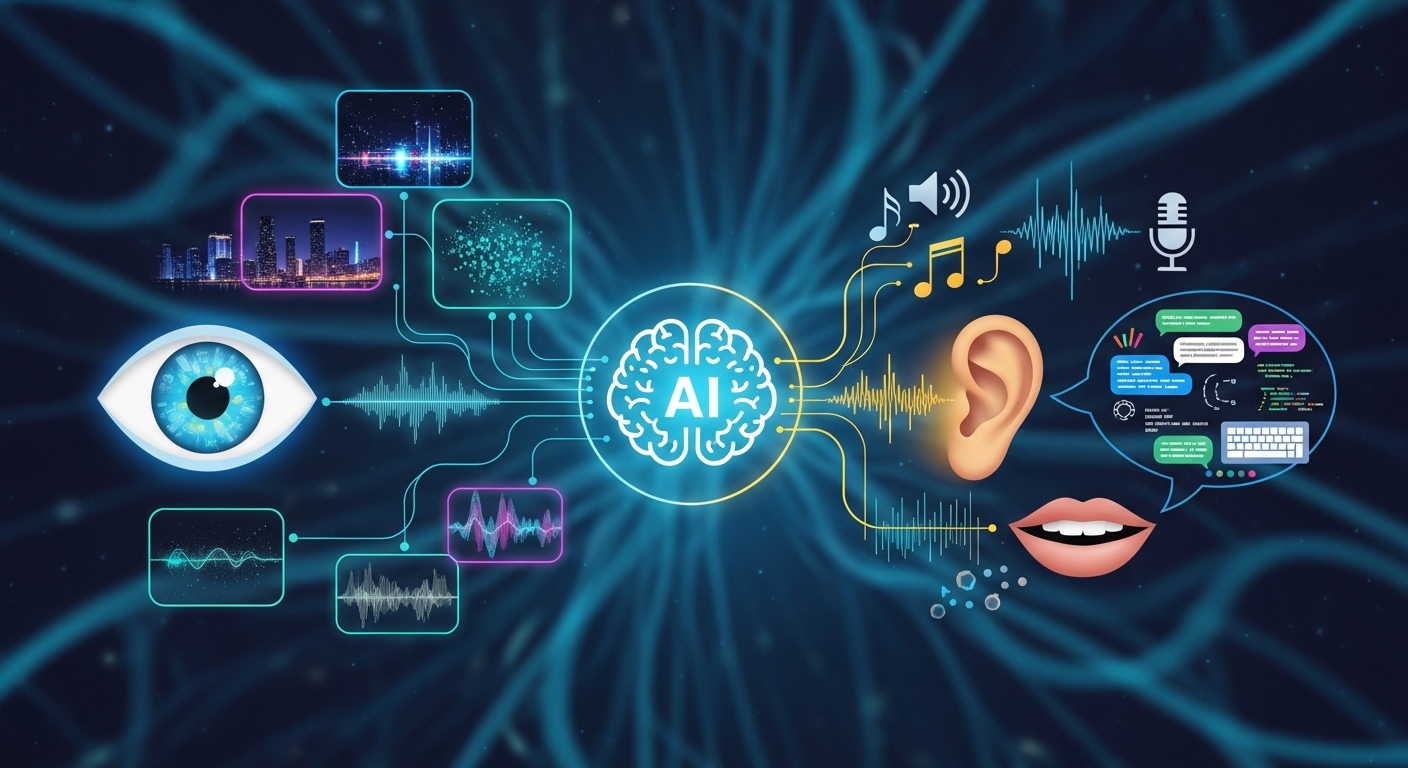The Dawn of a New Creative Era
The world of creativity is in the midst of a seismic shift, a revolution not seen since the dawn of the internet or the invention of the camera. At the heart of this transformation are two intertwined concepts that have gone from niche tech jargon to household names: ChatGPT & Generative AI. These powerful technologies are no longer just fascinating experiments; they are practical tools being woven into the very fabric of how we create, design, write, and compose. From solo graphic designers to major film studios, generative AI is forcing a profound re-evaluation of what it means to be creative, what tools we use, and what the future of artistic expression holds.
But this revolution isn’t without its controversies. For every artist hailing AI as a groundbreaking collaborator, there’s another raising valid concerns about ethics, copyright, and the potential displacement of human jobs. Is this new technology a muse in the machine, an assistant that can banish creative block forever? Or is it a Pandora’s box that threatens the value of human skill and originality? This article delves deep into the impact of ChatGPT & generative AI on the creative industries, exploring both the incredible opportunities and the complex challenges that lie ahead.
What Exactly Is Generative AI?
Before we explore its impact, it’s crucial to understand what we’re talking about. At its core, generative AI is a category of artificial intelligence that doesn’t just analyze or classify data—it creates something entirely new. It learns from vast datasets of existing text, images, code, and sounds, and then uses that knowledge to generate novel content that is often indistinguishable from human-created work.
Beyond Simple Automation
Think of it as the difference between a spell checker and a co-author. A spell checker (a form of analytical AI) can identify an error based on a set of rules. Generative AI, on the other hand, can write a poem, design a logo, or compose a melody from a simple text prompt. It’s not just following instructions; it’s synthesizing information and producing a unique output. This ability to generate, rather than just process, is what makes it so revolutionary for creative fields.
The Rise of Models like ChatGPT
The recent explosion in generative AI’s capabilities is largely thanks to the development of sophisticated models like OpenAI’s GPT (Generative Pre-trained Transformer) series, which powers ChatGPT. These Large Language Models (LLMs) are trained on a massive portion of the internet, allowing them to understand context, nuance, and style. Similarly, diffusion models like those behind Midjourney and DALL-E have been trained on billions of images, enabling them to translate complex textual descriptions into stunning, high-fidelity visuals.
The Creative Revolution: Generative AI in Action
The theoretical potential of ChatGPT & generative AI is one thing, but its practical application is where the true revolution is happening. Across every creative discipline, these tools are being adopted to augment, accelerate, and sometimes even automate creative workflows.
Visual Arts and Design
Perhaps the most visually striking impact of generative AI has been in art and design. Tools like Midjourney, DALL-E 3, and Stable Diffusion can generate breathtaking images from simple text prompts. This has profound implications:
- Concept Art & Ideation: Instead of spending hours sketching, a concept artist can now generate dozens of visual ideas for a character or environment in minutes, rapidly iterating on themes and styles.
- Graphic Design: AI can be used to create unique logos, social media assets, and marketing materials, providing a powerful starting point for designers.
- Democratization: Individuals without traditional artistic skills can now visualize their ideas, opening up new avenues for personal and professional expression.
Writing and Content Creation
As a powerful language model, ChatGPT has become an indispensable tool for writers, marketers, and developers. It’s not about replacing the writer, but about enhancing their process. Common uses include:
- Brainstorming and Outlining: Stuck for ideas? ChatGPT can generate article topics, plot points for a story, or marketing angles for a campaign.
- Drafting and Editing: It can help write first drafts, rephrase sentences for clarity, summarize long documents, and even check for grammatical errors with more nuance than traditional tools.
- Coding Assistance: Developers use tools like GitHub Copilot (powered by similar technology) to write boilerplate code, debug issues, and learn new programming languages faster.
Music and Audio Production
The world of sound is also being transformed. AI music generators can compose royalty-free background music for videos, create unique soundscapes for games, or even generate melodies and chord progressions to inspire musicians suffering from writer’s block. While still in its earlier stages compared to text and image generation, the potential for AI to become a collaborative partner in the recording studio is immense.
The Double-Edged Sword: Benefits vs. Challenges
The integration of generative AI is not a simple story of progress. It’s a complex issue with significant benefits and equally significant challenges that the creative community is actively grappling with.
Unlocking Unprecedented Efficiency
The most immediate benefit is a massive boost in efficiency. Tasks that once took days can now be accomplished in hours or even minutes. This frees up creative professionals to focus on higher-level strategy, curation, and the refinement of ideas, rather than the tedious aspects of production. For freelancers and small agencies, this means being able to take on more work and compete with larger studios.
The Ethical Minefield: Copyright and Originality
This is the heart of the controversy. Generative AI models are trained on vast amounts of data scraped from the internet, often including copyrighted work from human artists, without their consent or compensation. This raises critical questions: Who owns an AI-generated image? If a model was trained on a specific artist’s style, is using it to create new work a form of plagiarism? Lawsuits are already underway, and the legal and ethical frameworks are struggling to keep pace with the technology.
The Fear of Job Displacement
Naturally, many creatives are worried about their livelihoods. If a client can generate a ‘good enough’ logo or article for a fraction of the cost, will they still hire human designers and writers? While some entry-level and repetitive tasks may be automated, many experts believe that AI will augment rather than replace most creative roles. The emphasis will shift from pure creation to skills like creative direction, prompt engineering, curation, and strategic thinking—the uniquely human elements of the creative process.
Navigating the New Creative Landscape: A Human-AI Collaboration
The most productive way forward seems to be viewing AI not as a competitor, but as a collaborator—a powerful new paintbrush, not a replacement for the artist. The future of creative work will likely be a hybrid model where human talent guides and refines AI-generated output.
From Replacement to Augmentation
Successful creatives will be those who learn to leverage these tools effectively. A writer might use ChatGPT to overcome writer’s block, an illustrator might use Midjourney to generate background assets, and a musician might use an AI tool to create a baseline to build upon. The final product is still shaped by human taste, emotion, and intention. The AI is a powerful assistant, but the human is the creative director.
The Enduring Value of the Human Touch
Ultimately, great art and design connect with us on an emotional level. They tell stories, convey feelings, and reflect shared human experiences. While AI can mimic style and structure, it cannot replicate genuine lived experience, cultural context, or emotional depth. The curation, critical thinking, and storytelling ability of a human creator remain indispensable. The most valuable skill in the age of AI may be the ability to ask the right questions and imbue generated content with meaning and purpose.
The Future is Now: Join the Conversation
The development of ChatGPT & generative AI is moving at a breathtaking pace. What seems like science fiction today will be a standard tool tomorrow. For creative professionals, ignoring this technology is not an option. The key is to approach it with a curious and critical mind. Experiment with the tools, understand their capabilities and limitations, and participate in the crucial conversations about their ethical implementation.
This isn’t the end of human creativity; it’s the beginning of a new chapter. By embracing these tools thoughtfully, we can augment our abilities, push the boundaries of expression, and unlock new forms of art and media we can’t even imagine yet. What are your thoughts on the role of AI in creativity? Have you used these tools in your own work? Join the conversation and let’s navigate this exciting new frontier together.

